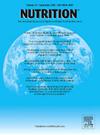Unveiling predictive factors for household-level stunting in India: A machine learning approach using NFHS-5 and satellite-driven data
IF 3.2
3区 医学
Q2 NUTRITION & DIETETICS
引用次数: 0
Abstract
Objectives
Childhood stunting remains a significant public health issue in India, affecting approximately 35% of children under 5. Despite extensive research, existing prediction models often fail to incorporate diverse data sources and address the complex interplay of socioeconomic, demographic, and environmental factors. This study bridges this gap by employing machine learning methods to predict stunting at the household level, using data from the National Family Health Survey combined with satellite-driven datasets.
Methods
We used four machine learning models—random forest regression, support vector machine regression, K-nearest neighbors regression, and regularized linear regression—to examine the impact of various factors on stunting. The random forest regression model demonstrated the highest predictive accuracy and robustness.
Results
The proportion of households below the poverty line and the dependency ratio consistently predicted stunting across all models, underscoring the importance of economic status and household structure. Moreover, the educational level of the household head and environmental variables such as average temperature and leaf area index were significant contributors. Spatial analysis revealed significant geographic clustering of high-stunting districts, notably in central and eastern India, further emphasizing the role of regional socioeconomic and environmental factors. Notably, environmental variables like average temperature and leaf area index emerged as strong predictors of stunting, highlighting how regional climate and vegetation conditions shape nutritional outcomes.
Conclusions
These findings underline the importance of comprehensive interventions that not only address socioeconomic inequities but also consider environmental factors, such as climate and vegetation, to effectively combat childhood stunting in India.
求助全文
约1分钟内获得全文
求助全文
来源期刊

Nutrition
医学-营养学
CiteScore
7.80
自引率
2.30%
发文量
300
审稿时长
60 days
期刊介绍:
Nutrition has an open access mirror journal Nutrition: X, sharing the same aims and scope, editorial team, submission system and rigorous peer review.
Founded by Michael M. Meguid in the early 1980''s, Nutrition presents advances in nutrition research and science, informs its readers on new and advancing technologies and data in clinical nutrition practice, encourages the application of outcomes research and meta-analyses to problems in patient-related nutrition; and seeks to help clarify and set the research, policy and practice agenda for nutrition science to enhance human well-being in the years ahead.
 求助内容:
求助内容: 应助结果提醒方式:
应助结果提醒方式:


